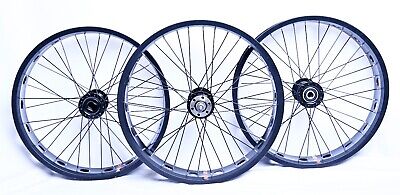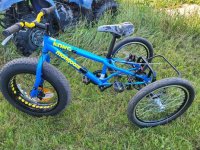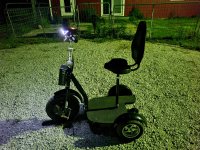kylerlaird
1 W
My daughter says she wants her 20" fat tire e-bike to be a trike. I bought one of the cheap trike conversion axles.
On the drive side, there's a double-D shaft. It looks like these wheels are made for this application.

I'd rather use the front wheels from her bike and her sister's bike (replaced by 750W motor wheels) and just lace them on to the proper hubs. I haven't been able to find the hubs, though. I only found some for thinner wheels. I did see fat tire trike hubs that mate with a 3-hole flange instead of the double-D shaft. It looks like I could buy a replacement axle and do that, but I'd like to see if I can make this design work. Ideally, I'd find hubs with disc mounts, too.
Any suggestions? I'm thinking about building trikes for me and my wife, too, so I'd like to get good at it.
--kyler
On the drive side, there's a double-D shaft. It looks like these wheels are made for this application.

20" Fat Tire 20x4.0 Tricycle wheel Trike Wheelset 3 wheel convert kit 15mm axle | eBay
Right wheel is the drive wheel, with one side bearing and one side D shape drive hole. Left wheel with two sides bearings.
www.ebay.com
I'd rather use the front wheels from her bike and her sister's bike (replaced by 750W motor wheels) and just lace them on to the proper hubs. I haven't been able to find the hubs, though. I only found some for thinner wheels. I did see fat tire trike hubs that mate with a 3-hole flange instead of the double-D shaft. It looks like I could buy a replacement axle and do that, but I'd like to see if I can make this design work. Ideally, I'd find hubs with disc mounts, too.
Any suggestions? I'm thinking about building trikes for me and my wife, too, so I'd like to get good at it.
--kyler




